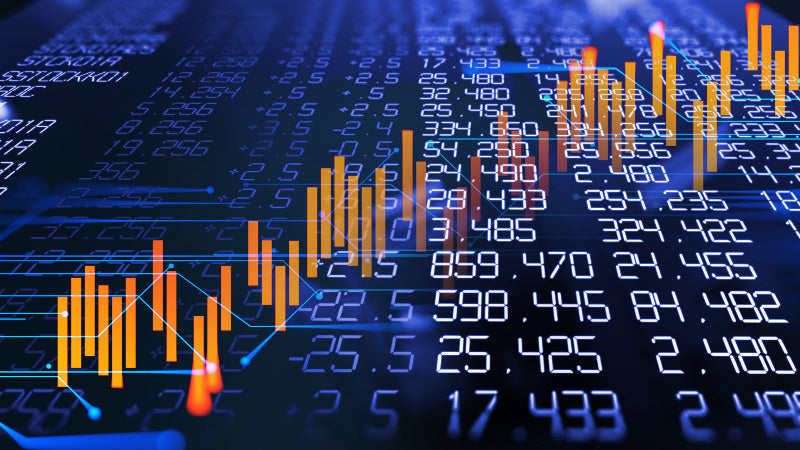
Your First Trade Could Be a Win — If You Pick the Right Market
Stepping into the trading world without understanding the types of markets is like sailing without a compass — you might move, but you won’t know where you’re going
In this post, we’ll break down stocks, CFDs, crypto, futures, indices, and synthetic indices in plain language, so you’ll know exactly what you’re dealing with before risking your first dollar.
Before we go on,
HERE ARE SOME KEY CHARACTERISTICS OF EVERY FINANCIAL MARKET
1. Liquidity
Liquidity refers to how easily assets can be bought or sold without causing significant changes in their price.
-
High Liquidity: Markets like the foreign exchange (Forex) have high trading volumes, making it easy to enter and exit positions.
-
Low Liquidity: Real estate or small-cap stocks may take longer to sell at fair value.
2. Volatility
Volatility measures how much prices fluctuate over a given period.
-
High Volatility: Often seen in cryptocurrency or emerging market stocks—prices can move sharply in minutes.
-
Low Volatility: More stable assets, like government bonds, change value slowly.
3. Market Participants
Financial markets are made up of various players:
-
Retail Investors: Individuals trading for personal goals.
-
Institutional Investors: Banks, hedge funds, pension funds with large capital.
-
Market Makers: Entities ensuring liquidity by quoting buy and sell prices.
4. Regulation
Markets are governed by rules to protect investors and maintain fairness.
-
Regulatory Bodies: SEC (U.S.), FCA (UK), etc.
-
Purpose: Prevent fraud, insider trading, and market manipulation.
5. Accessibility
This refers to how easily individuals can participate in the market.
-
Open Markets: Forex is open to almost anyone with an internet connection.
-
Restricted Markets: Private equity or venture capital often require accreditation.
6. Transparency
A transparent market provides clear and accessible information about prices, trading volumes, and corporate actions.
-
High Transparency: Stock exchanges like NYSE publish real-time quotes.
-
Low Transparency: Over-the-counter (OTC) markets may have limited price visibility.
7. Global Interconnection
Financial markets are linked worldwide, meaning events in one region can affect another.
-
Example: A drop in Chinese exports can impact U.S. stock markets.
-
Impact: Creates both opportunities and systemic risks
Key Characteristics of Financial Markets
Financial markets come in many forms — from traditional stocks and futures to modern innovations like synthetic indices and cryptocurrencies.
The table below breaks down the characteristics aforementioned, making it easier to compare them side-by-side and understand how each behaves in real-world trading.
|
Property |
Stocks |
CFDs |
Crypto |
Futures |
Indices |
Synthetic Indices |
|
1. Liquidity |
Highly liquid, especially for large-cap companies, but varies by region and company size. |
Mirrors underlying asset liquidity; generally good but broker-dependent. |
High for major coins (BTC, ETH), but low for smaller coins. |
Very liquid for popular contracts (e.g., crude oil, S&P 500). |
Strong for major global indices. |
Broker-controlled; typically stable but artificial. |
|
2. Volatility |
Moderate; earnings reports and news can cause significant swings. |
Matches the volatility of the underlying asset; can be amplified by leverage. |
Extremely volatile; 5–10% moves in hours are common. |
Varies by commodity or index; can be high. |
Lower than single stocks but still moves with global events. |
Programmed volatility levels; constant by design. |
|
3. Market Participants |
Retail traders, institutions, funds, and governments. |
Primarily retail traders and brokers. |
Global mix: retail, institutions, miners, developers. |
Institutions, hedge funds, professional traders. |
Mostly institutional; retail access via ETFs or CFDs. |
Only traders with accounts from offering brokers. |
|
4. Regulation |
Highly regulated by government agencies. |
Regulated in many countries; restricted in some regions. |
Light to moderate regulation; varies globally. |
Strongly regulated in established markets. |
Regulation tied to the underlying assets. |
Little to no external regulation; broker-controlled. |
|
5. Accessibility |
Easy access via online brokers and trading apps. |
Widely available online; small accounts can participate. |
24/7 availability; no middleman required. |
Requires special accounts; higher capital in some markets. |
Accessible through ETFs, futures, or CFDs. |
Always available via offering broker platforms. |
|
6. Transparency |
Very high; public reports and data widely available. |
Varies by broker; based on underlying market pricing. |
Blockchain-based transparency, but manipulation possible. |
Transparent exchange order books. |
Clear composition and performance tracking. |
Limited transparency; fully controlled by brokers. |
|
7. Global Interconnection |
Sensitive to economic data, global news, and investor sentiment. |
Reflects the global assets they track. |
Borderless, influenced by worldwide market sentiment. |
Driven by global supply-demand cycles. |
Mirrors the economic health of multiple companies/sectors. |
Independent of real-world events; algorithm-driven. |
Final Tip for Beginners:
If you want stability and regulation, stocks and indices are a safe starting point. If you prefer speed and volatility, crypto or futures may suit you. For flexibility and small accounts, CFDs offer variety, while synthetic indices give consistent trading opportunities without global market impact — but remember, they’re broker-controlled.
